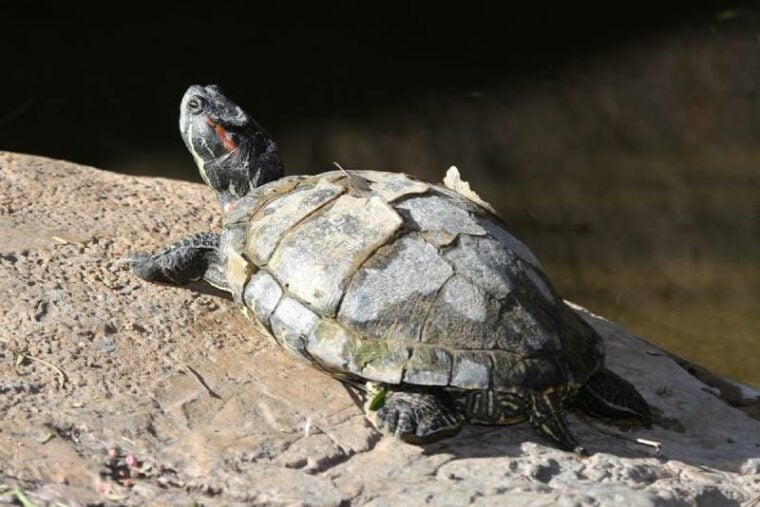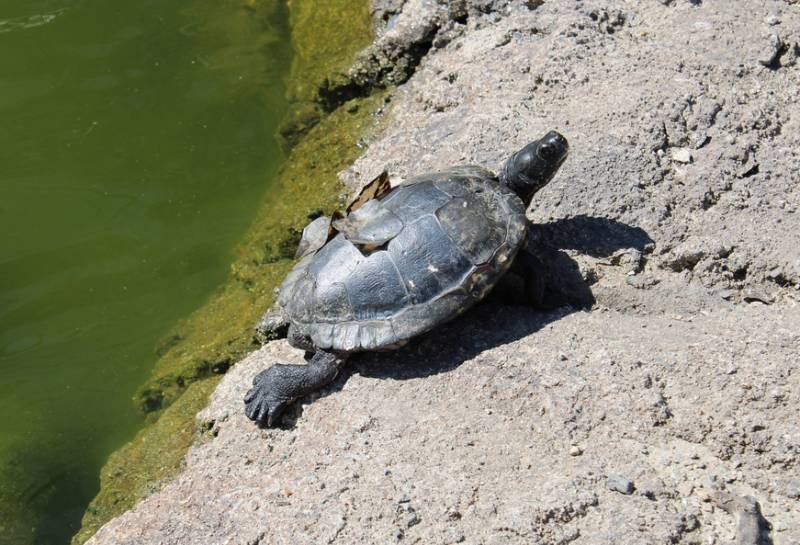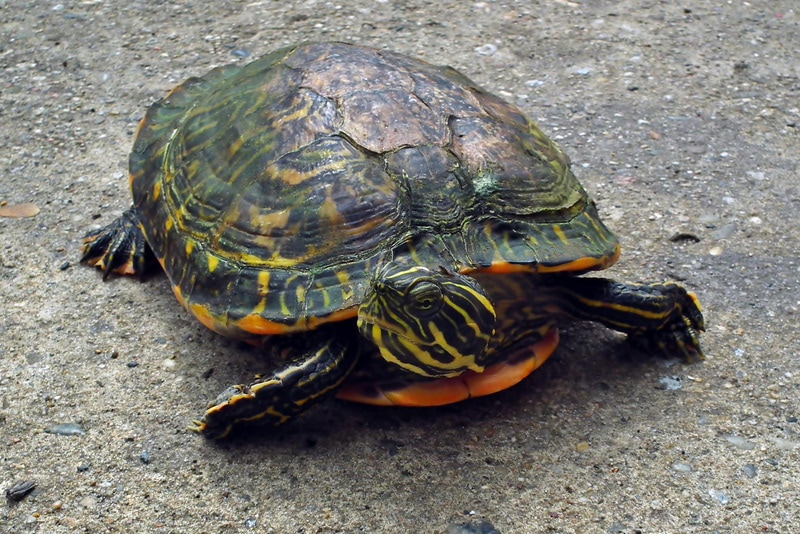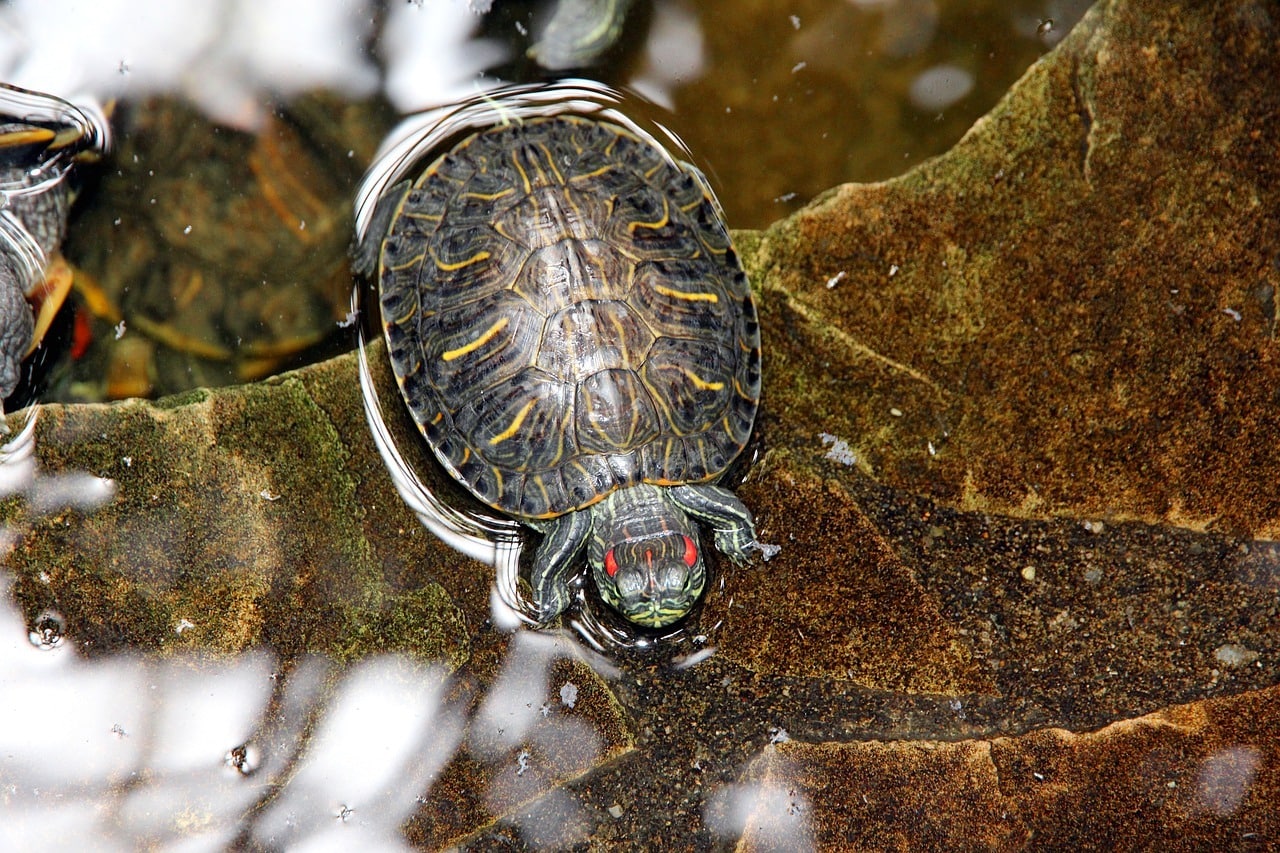
Click to Skip Ahead
Turtle shell peeling is perfectly natural for your hard-shelled friend. However, though it is a normal occurrence in reptiles, you must be able to recognize the signs that the peeling process isn’t correct or that your turtle is peeling in an unhealthy way. In fact, many turtle owners have no idea what to do when they see a peeling shell. In this article, we’ll discuss turtle shell peeling, why it happens, and when you should worry that something is wrong.
What Is Turtle Shell Peeling?
Turtle shell peeling occurs more frequently when the reptile is young and still growing. However, excessive shell peeling isn’t healthy. The part of the shell that you see peeling is the scutes. These aren’t exactly a part of the turtle’s shell. Instead, the scutes are an extra layer of protection. Think of the scutes as the fingernails of the turtle. The purpose of the shell peeling is to get rid of the old scutes and make room for the new ones.
While a turtle’s shell peeling is a normal occurrence, if it happens too often or if the peeling is forced, it could harm your turtle. Dysecdysisis is the abnormal peeling of the scutes (shell).

What Are the Signs of Turtle Shell Peeling?
Turtle shell peeling is a pretty common occurrence, but you’ll still want to know the signs that it is happening, so you can look for any abnormalities and get your turtle to the vet right away if you see any. When your turtle is shedding, all of the scutes should have a thin sheen of protective fluid underneath them. It’s a white fluid called water osmosis produced by specialized cells in your turtle’s shell. If you don’t see this fluid, it’s time to call the vet.
The pieces of your turtle’s shell should peel off pretty easily. If they struggle to shed their scutes, they need veterinary treatment. If the pieces come off easy, then there are no problems or injuries for you to worry about.
If your turtle has no wounds, injuries, or other signs of distress, the shell peeling process should be easy for the turtle, and you’ll barely know that it’s happening. When the turtle is shedding, the skin underneath the scutes should be healthy. In most cases, you’ll be able to find wounds that are visible underneath the scutes and know it’s time to go to the vet.
Also, when your pet starts to peel, it will emit an odor. This is perfectly normal. However, if the smell suddenly becomes foul, something is wrong, and you must make an appointment with your vet.
What Are the Causes of Turtle Shell Peeling?
There are two reasons for turtle shell peeling. Either the turtle is growing or trying to ward off shell rot. There are also signs you should watch for that indicate your turtle’s peel isn’t healthy. If your turtle is suddenly lethargic, not moving, and shows no interest in eating, then the peel may be giving the turtle a problem. If your turtle’s shell is finished with the peeling process, yet the turtle doesn’t start eating after a couple of days, you should visit the vet.
As previously stated, your turtle will have a whitish fluid under the scutes during the peel. However, your turtle could be severely sick if the fluid is whitish red. The whitish red is a combination of blood and fluid, indicating that your turtle is suffering from a life-threatening condition and needs to be treated immediately.
Other indications that your turtle is having an unhealthy peel are listed below. If you see any of these signs in your reptile friend, it’s best to immediately make an appointment with your vet for treatment and diagnosis.
How Do I Care for a Turtle with Turtle Shell Peeling?

How you care for a turtle whose shell is peeling depends heavily on whether the peel is normal or abnormal. If your pet has a problem with the peeling process, it is possible to debride the shell to remove some of the scutes. However, you should never try to do the debriding yourself. This procedure should only be done by an experienced vet. Doing it yourself can end up doing your turtle more harm than good.
You can also try cleaning your turtle’s water to see if that is the issue with the unhealthy peel. Changing 50% of the water should make a difference within a couple of weeks. If your turtle isn’t eating healthy enough, it could cause a problem with its shed. In that case, you need to talk to your vet to see what to feed the turtle to get it back to normal.
The proper water temperature is crucial to keep a turtle healthy and to have a healthy peel. It’s essential to keep the temperature at the right level, as the wrong temperature could make your turtle sick or kill it if it isn’t caught in time. A sanitary tank that’s cleaned regularly and maintained at the correct temperature and a healthy diet should help your turtle experience a healthy peel.
Frequently Asked Questions (FAQs)
Now that you know what turtle shell peeling is and what to do about it, we’ll try to answer a few of the most common questions about turtle shell peeling in the FAQ section below.
How Can I Tell if it’s Turtle Shell Peeling or Turtle Shell Rot?
There is a difference between turtle shell peeling, which is normal, and turtle shell rot. In most cases, turtle shell rot will damage the shell and have a little white spot on the affected scutes. Bacterial and fungal infections cause shell rot. If your turtle is suffering from shell rot, call your vet right away.
When Should I Consult a Vet?
If you feel that your turtle isn’t shedding properly or see any of the signs of issues we listed above, it’s best to contact a vet right away.
We hope our guide on turtle shell peeling and how to look for an unhealthy peel helps you and your pet through the peels ahead.
Conclusion
While turtle shell peeling is normal for your pet, there’s always the chance that your pet will experience an unhealthy peel. It’s best to look for the signs of healthy and unhealthy peeling we discussed to determine if your turtle needs to visit the vet. Although it’s challenging to determine if your pet is sick, you can pick up on subtle signs that it is unwell. Turtles aren’t as expressive as cats and dogs, but their diet, environment, and health require just as much care. We hope our guide on turtle shell peeling and how to look for an unhealthy peel helps you and your pet through the peels ahead.
Featured Image Credit: Four Oaks, Shutterstock







